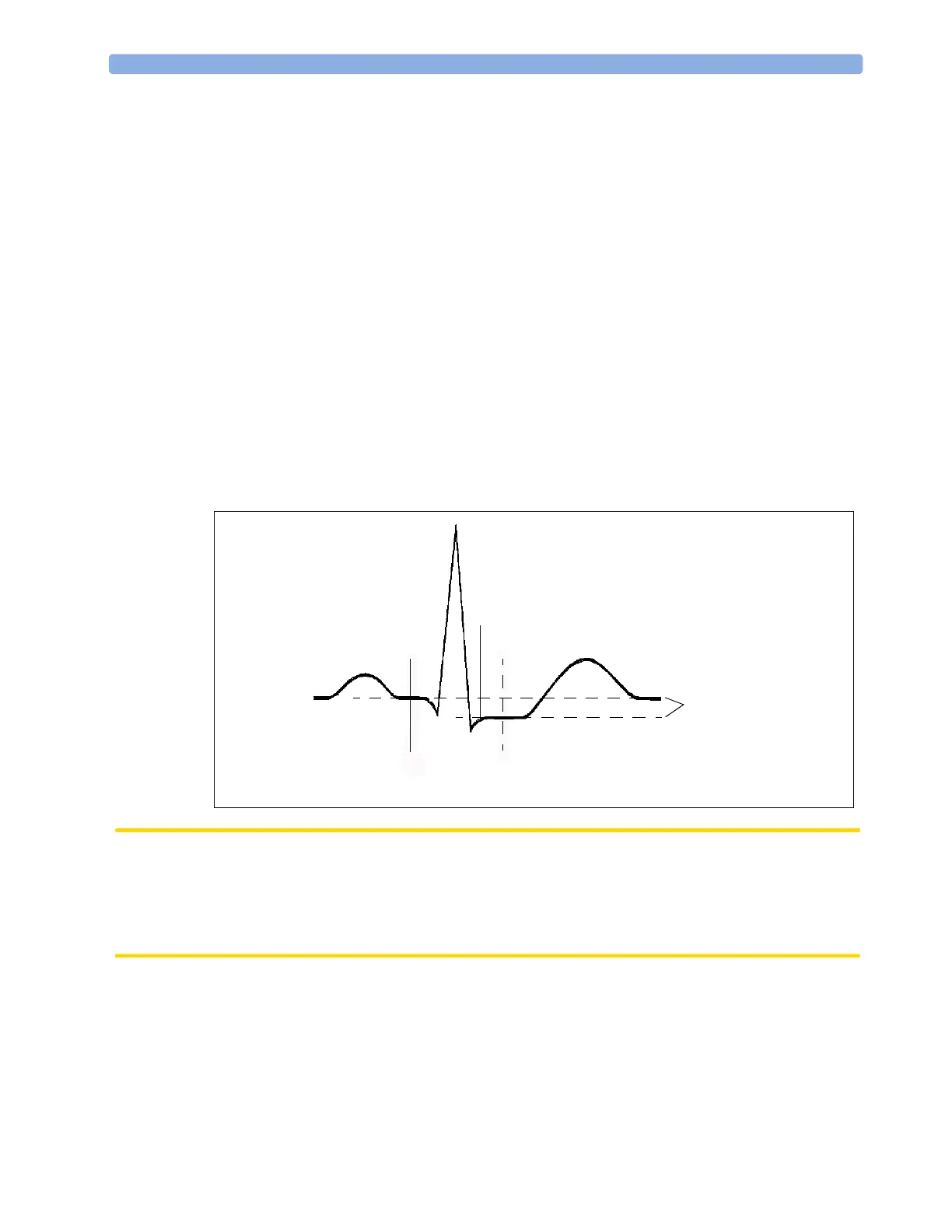7 ECG, Arrhythmia, ST and QT Monitoring Recording ST Segments
130
The first baseline is stored automatically after ST monitoring is started, or when a new patient is
admitted. To update ST baselines,
1 Select an ST snippet to open the ST Baseline window.
2 In the ST Baseline window, select Update Baseline to store all current snippets as
baselines. This deletes all previously-stored baselines.
Recording ST Segments
♦ To record all currently available ST snippets and baselines, in the ST Baseline window, select
the pop-up key Record ST.
About the ST Measurement Points
The ST value for each beat complex is the vertical difference between the ISO point and the ST point,
as shown in the diagram below. The isoelectric (ISO) point provides the baseline, the ST point is at the
midpoint of the ST segment. The J point is where the QRS complex changes its slope; as it is a fixed
distance away from the ST point, it can be useful to help you position the ST point correctly.
CAUTION The ST measurement points need to be adjusted when you start monitoring, and if the patient's heart
rate or ECG morphology changes significantly, as this may affect the size of the QT interval and thus
the placement of the ST point. Artifactual ST segment depression or elevation may occur if the
isoelectric point or the ST point is incorrectly set.
Always ensure that ST measurement points are appropriate for your patient.
Adjusting ST Measurement Points
Depending on your monitor’s configuration, the ST point can be positioned either
J point, for example, 48 msec
R-wave peak at 0 msec
Isoelectric point set to -80 msec
Difference = ST value
ST measurement point, for example, J + 60 msec
T
P
Q
S

